Campervan air conditioning – everything you need to know & the best 12V air con units
There are many options for staying cool in your campervan, but nothing beats air conditioning for convenience and effectiveness. There are DC and AC models available in a variety of form factors, and a couple of different cooling technologies. However, a major point of consideration with air con is power consumption — they’re very power intensive appliances.
This article will give an overview of the campervan air conditioning market. We’ll explore DC and AC options, different form factors, and cooling technologies. We will also look into how much power an air con unit draws, and go over your options for incorporating one into your electrical system. Finally, we’ll suggest some alternatives for staying cool on those hot summer days that we all love so much.
How does air conditioning work?
Air conditioning works under the same principle as your fridge, referred to as the vapour compression refrigeration cycle. Here’s how it works:
A refrigerant liquid running through pipes in the air con unit collects indoor heat as indoor air is blown over it by a fan. The air cools as it passes its heat to the refrigerant, and this cool air is what comes out of your air conditioner. The now heated refrigerant then moves through a compressor, which compresses it and raises its temperature past the outdoor temperature. The hot, compressed refrigerant then passes its heat to the outside air as outside air is blown over it by a fan. The refrigerant cools as it passes its heat to the outside air. The cool refrigerant now passes through a valve where it decompresses, reducing its pressure and temperature. The now cold refrigerant is then ready to cool your indoor air again.
Campervan air conditioning and the vapour compression refrigeration cycle
This is how standard air conditioning units all work. The energy intensity of an air con unit comes mostly from the fact that a compressor is a very energy-intensive appliance. Couple that with the continuously running pumps and fans, and you’ve got a significant power draw.
Modern air con units designed for campervans incorporate efficient compressors to try to reduce this power draw. An increasing number of these are 12V/24V, and can potentially run from your campervan’s leisure battery. Let’s take a look at some of these now.
12V/24V DC campervan air conditioning
12V/24V campervan air conditioning units incorporate an inverter to allow them to be powered by a 12V or 24V system. These inverters are generally efficient, but will also contribute to the unit’s power draw.
Dometic CoolAir RTX
The Dometic CoolAir RTX comes in a 1000W or a 2000W model, both of which run off 12V power. This unit was originally designed for use in trucks, but campervans share the key elements of the truck owner’s use case: a relatively small space, and a leisure battery for power.
The Dometic RTX series incorporates quiet running fans and a highly efficient, two-cylinder compressor. The variable speed inverter runs at a lower or higher capacity, depending on the setting of the air conditioner, allowing for relatively high energy efficiency. Dometic’s advertised consumption figure is 19A on Eco mode for the 12V version, which we stock in our webshop.
Indel B Plein-Aircon
The Indel B Plein-Aircon is another popular 12V unit, designed specifically for campers. The Plein-Aircon’s features are very similar to the Coolair’s: quiet running fans, an efficient, built-in inverter, and a 12V power source. The Plein-Aircon comes in a 1200W version, and consumes 16Ah – 42Ah, according to the manufacturer.
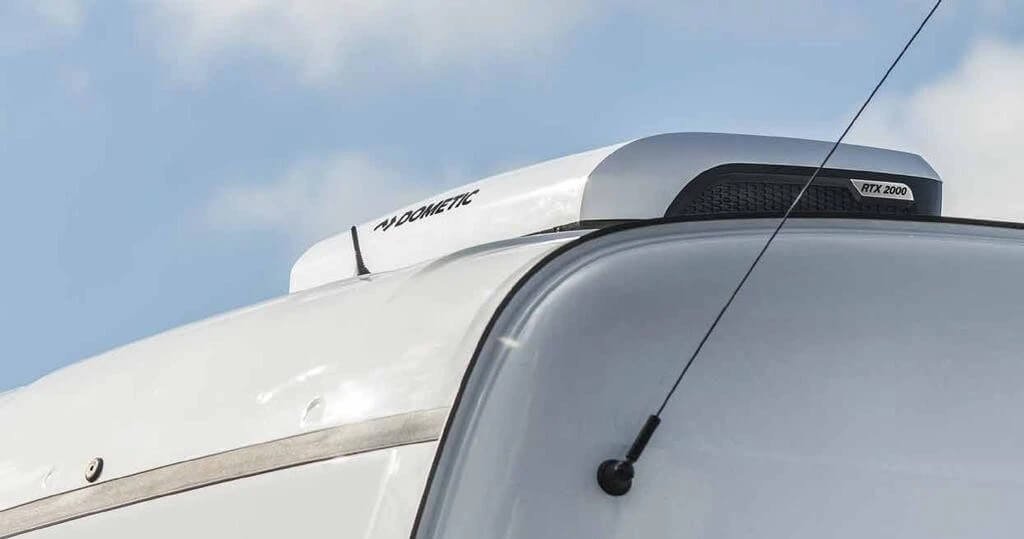
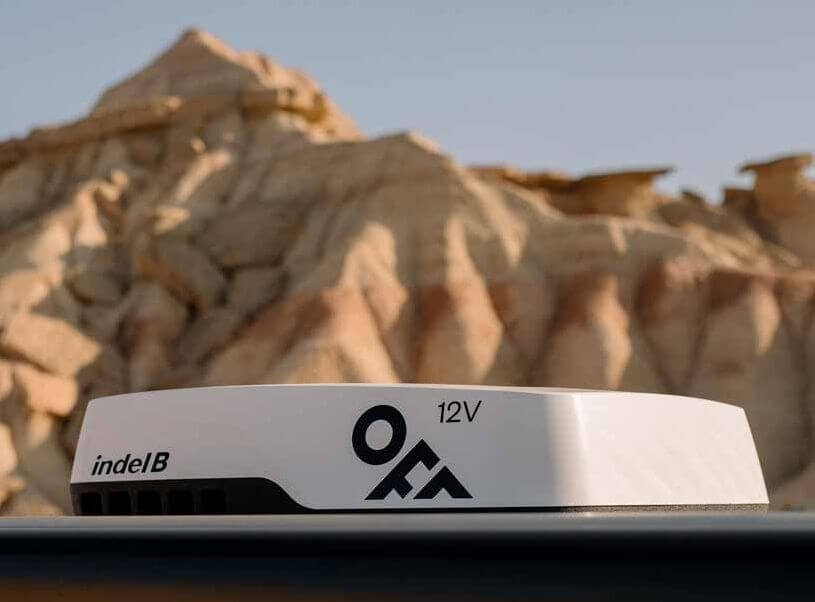
Evaporative coolers
For those who want to spend time off-grid, an alternative to traditional air con is evaporative cooling. Evaporative coolers are much simpler than air conditioning, with fewer moving parts. When hot outside air is passed through filters saturated with water, water evaporates into the air, cooling it down. This cool air is then blown into the indoor space.
The only powered components in an evaporative cooler are the fans and a small water pump, making them much less power intensive. For example, the Viesa Holiday IIIs, a popular evaporative cooler for campervans, only uses 1.3A – 5.8A when running. Furthermore, evaporative coolers constantly pull fresh outside air inside, cooling it on the way, rather than recirculating stale air from inside the van. Finally, the efficiency of an evaporative cooler actually increases as outside temperatures increase, as this promotes evaporation of water. This is in contrast to air con units, which have to work harder as it gets hotter outside.
Evaporative cooling as an alternative to air conditioning
Evaporative coolers won’t feel the same as air con units. They have a more subtle effect, passing cool, fresh, humidity-controlled air into the room, as opposed to dry, thoroughly chilled air. The cooling effect is less profound, though some say that overall comfort is higher with an evaporative cooler due to their maintenance of a humidity level that’s optimal for human comfort. Their main drawback is the fact that their efficacy decreases as outside humidity increases.
In that case, does the UK’s relatively damp island climate make evaporative cooling untenable? Well, many commercial buildings in the UK are turning to evaporative cooling for its low power requirements. Humidity decreases as temperatures increase in the hottest part of the day. Thus, an evaporative cooler is at its most effective during the hours when cooling is needed most. And if you take holidays to Mediterranean Europe, you’ll find your evaporative cooler even more effective there.
The other consideration is that evaporative coolers use water when they are running. The Viesa Holiday IIIs uses 0.5L – 1.5L per hour, which it takes from an integrated tank that must be topped up.
240V AC campervan air conditioning
If you’re not constrained by a need to run your campervan air conditioning off your leisure battery, there are many more options available. AC models range in power anywhere from 1500W to 3000W, and would need an appropriately sized inverter to be powered by your leisure batteries. Otherwise, you would need to only use your air con when connected to shore power in a campsite.

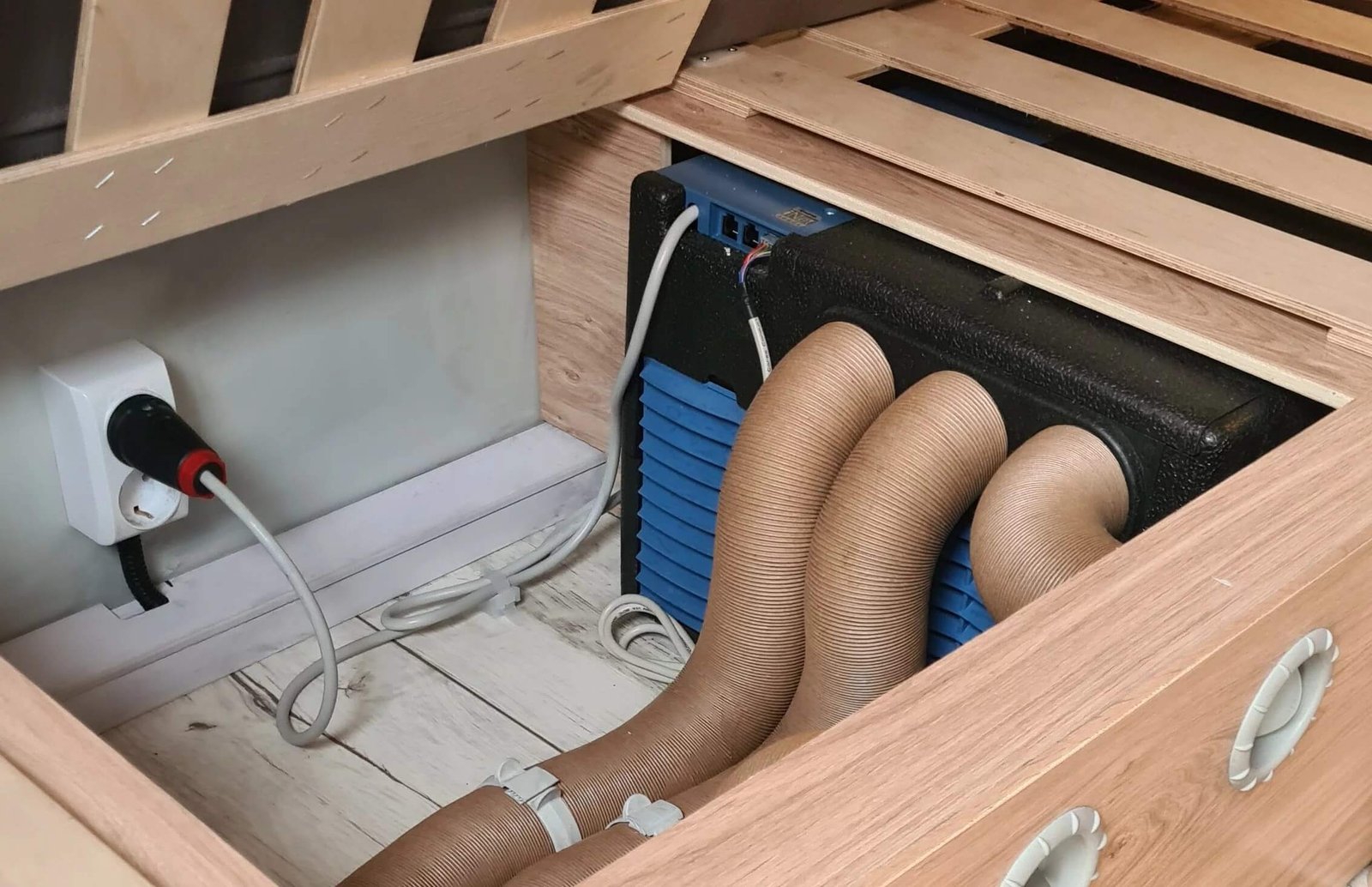
If this is your use case, the broader range of AC air con units includes a variety of potentially interesting form factors. For example, the Dometic Freshlight incorporates a skylight, for a neat, 2-in-1 solution. On the other hand, the Dometic Freshwell and Truma Saphir both fit under the benches in your camper, removing the need for a chunky roof unit. Being higher spec, AC units will often dehumidify and filter air for dust and microbes. Additionally, many of them can double as heaters.
Can I run campervan air conditioning off-grid?
Off-grid usage of air conditioning is certainly appealing. We have established that air con is at the higher end for electricity consumption, but what effect would it have on the specs of a campervan electrical system? Let’s take a look at some theoretical example systems.
Below we have an example system specced to power some low and medium intensity appliances. This system is designed with a mix of off-grid and campsite use in mind.
Example 1 – low-medium power usage, mixed use
Appliances
Phone chargers
Laptop chargers
WiFi router
USB speaker
Small blender
Fridge
- 250Ah AGM battery bank (2x 125Ah TN Power)
- 500VA MultiPlus inverter/charger
- 2x 150W solar panels
- 100/20 MPPT smart charge controller
- 30A battery to battery charger
- Victron SmartShunt
- Busbars, cables, connectors, fuses, switches, etc.
Total cost: ~£3,200
This is a fairly mid-spec system. We can also have a look at a higher spec system, specced to power medium and high intensity appliances, again in a mixed off-grid/campsite use case.
Example 2 – medium-high power usage, mixed use
Appliances
Phone chargers
Laptop chargers
WiFi router
USB speaker
TV
Small blender
Fridge
Hairdryer
- 375Ah battery bank (3x 125Ah AGM battery)
- 2000VA MultiPlus inverter/charger
- 2x 215W solar panels
- 100/30 MPPT smart charge controller
- 2x 30A battery to battery charger
- Victron SmartShunt
- Busbars, cables, connectors, fuses, switches, etc.
Total cost: ~£4,800
This is a system with higher power requirements, although still with an AGM battery bank. Let’s now investigate adding air conditioning to these two systems.
Running a 12V/24V DC air conditioner from your leisure battery
The Dometic RTX 1000W (a comparatively low wattage 12V air con unit) uses 19A on eco mode and 58A on high, with an assumed draw at medium power of 38.5A. Based on using the air con unit for 2 hours per day on medium, we can look at the required changes to both systems, and the implication on cost.
We usually spec battery banks based on being able to spend 3 full days off-grid at a time. This means without driving or solar power generation. This rule can change however based on your use case!
Example 1 – including 12V air con
As the RTX 1000W uses 38.5A on the medium setting, over 2 hours it would use:
2 hours x 38.5A = 77Ah per day
This would effectively double the daily power usage of this system, requiring us to double up the 250Ah battery bank. We don’t recommend installing an AGM battery bank over 400Ah, due to the significant size and weight.
Additionally, a lead acid battery’s advertised capacity is based on its C20 rating. The C20 rating is based on the battery delivering the same amount of power for 20 hours. However, once the air con has been added to this system, the hourly power draw could be as high as 44A. This means that if a lead acid battery bank smaller than 880Ah was used, the relative capacity of the battery bank would be reduced due to the high power usage.
Therefore, the addition of the air con unit to this system would require a lithium battery bank. In this instance, we would recommend a 432Ah lithium battery bank (2x 216Ah TN Power LiFePO4) which would give 2.6 full days off-grid without recharging.
The increased battery capacity would also require increased charging capabilities. Without this, the recharge speed would be much slower. We would therefore recommend a 500W solar array and an additional B2B for this use case.
- 460Ah lithium battery bank (230Ah Fogstar Drift)
- 500VA MultiPlus inverter/charger
- 2x 250W solar panels
- 150/35 MPPT smart charge controller
- 2x 30A battery to battery charger
- Victron SmartShunt
- Busbars, cables, connectors, fuses, switches, etc.
Total cost: ~£6,100
Example 2 – including 12V air con
The increased power usage would also mean a lithium battery bank for our second example. Due to its already high power usage, the system would require a 600Ah lithium battery bank to run the air con unit.
To ensure sensible recharging times, this system would now need a 720W solar array.
- 600Ah lithium battery bank (2x 300Ah Fogstar Drift)
- 2000VA MultiPlus inverter/charger
- 2x 360W solar panels
- 100/50 MPPT smart charge controller
- 2x 30A battery to battery charger
- Victron SmartShunt
- Busbars, cables, connectors, fuses, switches, etc.
Total cost: ~£7,800
Summary
As we can see, an air con unit is a significant addition to an electrical system. It’s worth highlighting here that these calculations are based on usage of 2 hours per day, which is pretty low in the grand scheme of things.
Using an air con unit for longer than this off-grid isn’t really viable.
The above calculations also haven’t factored in the cost of the air con unit itself, which we sell for £1,870 in our webshop.
In conclusion, it is possible to use an air con unit off-grid, but it’s a privilege with an associated increase in cost.
Air conditioning is certainly a luxury, but in some cases it may seem like an indispensable one. Campervans are notoriously hard to keep cool on sunny days, being as they are metal boxes with flat roofs. Campervan air conditioning offers reprieve at the touch of a button. Thus, like other ‘touch of a button’ conveniences, one must decide whether a beefed up electrical system is an acceptable trade-off.
If you do want to add an air con unit to your off-grid electrical system, get in touch via our electrical design service. Our engineers can design your system based on any appliances you want to run.
Campervan electrics leaving you confused?
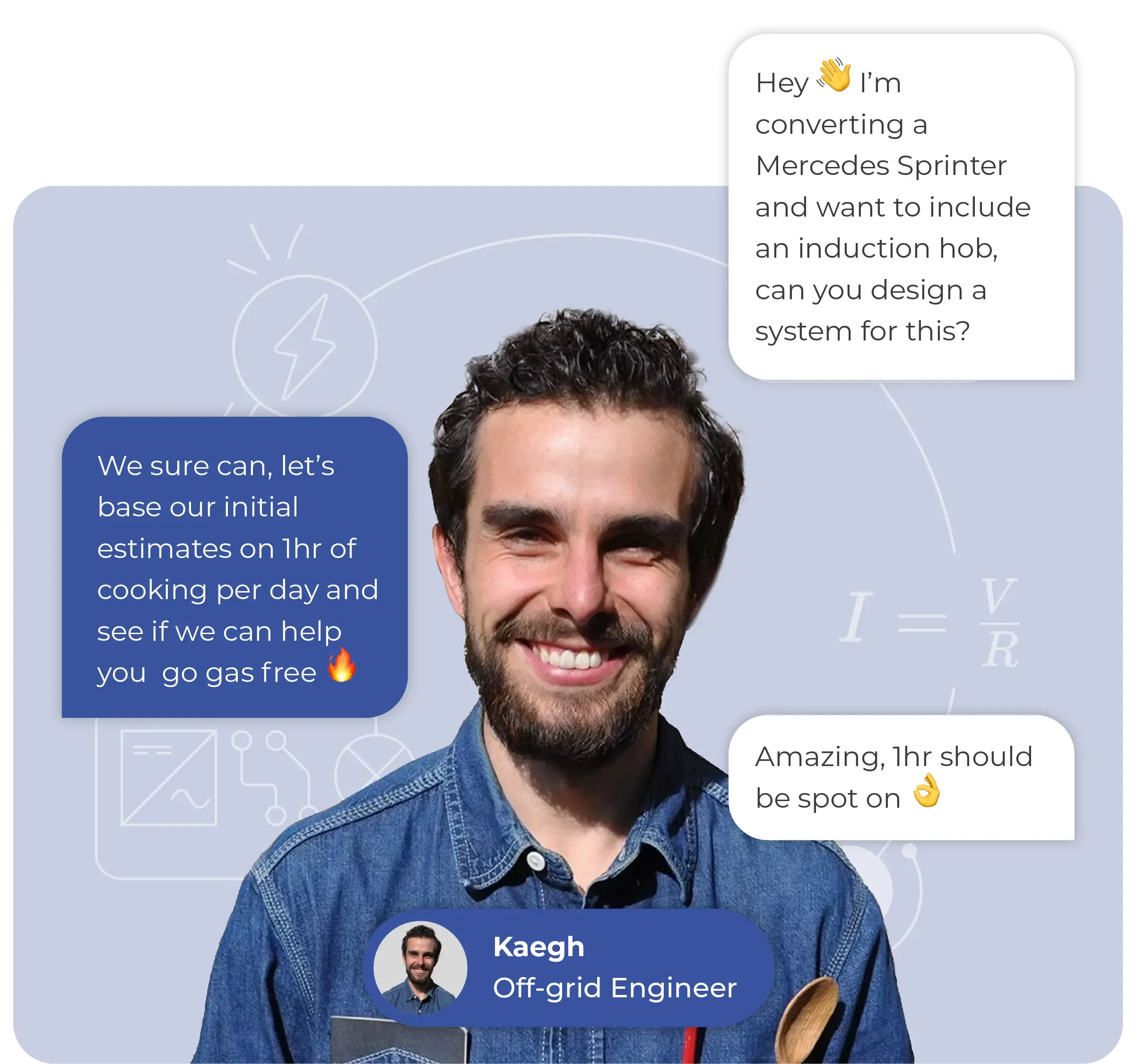
Running a 230V air conditioner from your leisure battery
On the other hand, we have our 230V AC air con units. The significantly broader range of options with these may make them more attractive than 12V models, especially if one is interested in alternative form factors. Let’s take a quick look at what running these from leisure batteries would entail.
The Truma Saphir has a stated current draw of 2.8A when cooling. Running at 230V AC, this equates to a power draw of 644W. We can estimate a current draw of around 54A when connected to an inverter running off 12V power. This estimate doesn’t take into account the loss of power due to the imperfect efficiency of inverters.
With these figures, we are looking at an equivalent power draw of running the Dometic RTX 1000 on high at 58A. The Dometic RTX 1000 pulls about 462W when running on medium, which required significant upgrades to the electrical systems in the examples we looked at above. The Truma Saphir’s power draw of 644W is significantly higher than this, and would require even more drastic upgrades.
Meanwhile, the Dometic Freshlight pulls an enormous 950W. Running these air con units from your leisure batteries would require a very high-wattage inverter, and a much bigger battery bank than anything we’ve looked at so far. These would need to be powered by a very large solar array (likely larger than will actually fit on a campervan’s roof!).
Running an evaporative cooler from your leisure battery
It’s also worth doing the same exercise with an evaporative cooler, as these have a much lower power draw. The Viesa Holiday IIIs uses 1.3A on low power and 5.8A on high power, with an assumed medium power draw of 3.6A.
Based on using the evaporative cooling unit on medium power for 2 hours per day, the additional battery capacity the system would require is:
3.6A power usage x 2 hours per day x 3 days = 21.6Ah additional battery capacity required
This is a small enough power draw that an upgrade in battery size may not be required. A modest increase in battery capacity, from our base of 250Ah to 300Ah, would allow us to run an evaporative cooler for around 4 hours a day.
This exercise demonstrates that even high usage of an evaporative cooler would only require very modest changes to an electrical system. The Viesa Holiday IIIs sells for £1440, but there are many other evaporative coolers on the market, including an array of portable options. Their comparatively low power requirements make evaporative coolers an attractive and realistic proposition even for vanlifers planning on living fully off-grid.
Portable air conditioners
Finally, it’s worth mentioning portable air conditioning units. There are many of these around, and most of them aren’t designed for off-grid use. Their power consumption can be anything between 800W to more than 2000W: far too onerous to consider running them from your batteries and solar panels. However, there are a few models which are campervan-specific. Let’s take a look at these in more detail.
Eurom 2401
The Eurom 2401 is a compact and comparatively low-power air con unit, comprising two units linked by a cable. When in use, the one unit hangs out of the window of your campervan, whilst the other unit sits inside. The two units exchange warm and cool air between them.
The Eurom 2401 isn’t as powerful as the 230V AC units mentioned above, but it’s popular with its users. They report that it will happily reduce the indoor temperature by 6-7°C, as long as it’s less than 35°C outside. The Eurom 2401 is also quieter than many rooftop units, and of course doesn’t take up any roof space.
The other major draw of the Eurom 2401 is its electricity usage. Its advertised power draw is 375W, which equates to about 1.63A on 230V AC power. Whilst significant, these numbers are substantially lower than the numbers we got when looking at 230V rooftop air con units.
Zero Breeze Mark 2
Another contender is the battery-powered Zero Breeze Mark 2. This is a toolbox-sized portable unit that, crucially, can run off its own rechargeable batteries. The Zero Breeze is specifically designed for use on campsites. It offers effective cooling of up to 17°C less than the outside temperature, running for 3-5 hours on a fully-charged battery.
By purchasing the Zero Breeze with an extra battery, you can double this runtime. Users have remarked upon its cooling efficacy, but noted that the Zero Breeze is loud when running. A rechargeable battery-operated model like this isn’t a bad alternative to the models we’ve been looking at. Like a rechargeable power pack, it would suit shorter trips or a mixture of campsite and off-grid living.
Is air conditioning the right choice for me?
In our exploration of air conditioning for a campervan, we’ve looked into the various options available with a focus on how much power they draw. If you’re happy to only run your campervan air conditioning off shore power when parked in a campsite, you won’t encounter any problems. Air con will simply be another high-power, plug-and-play appliance alongside things like induction hobs and electric kettles.
Running air conditioning off-grid using power from your leisure batteries, however, is a trickier proposition. You’ll have to pay close attention to the power draw of the unit you choose, and be realistic about how much you’ll be running it when deciding on the specifications of your electrical system. Once you’re living in your campervan, running air conditioning is something you’ll have to be mindful of, as it will have a significant impact on your batteries. Careful battery monitoring with a device such as a Smart Shunt or Cerbo GX will be essential.
It’s worth bearing in mind the poor trade-off we see when parking in the sun to power solar panels in order to run air conditioning. The sun delivers about 1000W of energy per square metre of exposed surface. Much of this is converted to heat. A modern solar panel with about 25% efficiency will, at best, convert a quarter of the sun’s energy to electricity. An air conditioner can move about 3.5 times the energy it uses as heat out of a room.
This means that under perfect conditions, an air conditioner powered by solar panels can convert 87.5% of absorbed solar energy into cooling. However, any exposed surface of your van that isn’t covered in solar panels will be absorbing 1000W of heat per square metre. Unless more than half your van is covered in solar panels, the heating by the sun quickly outstrips the cooling by the air con. Factor in the inefficiencies in any electrical system and the fact that your solar panels will be powering more than just air con, and we can quickly see that the trade-off isn’t a good one.
Staying cool without campervan air conditioning
Here at Climbingvan, we’ve survived very hot temperatures in our vans without air conditioning. So, allow us to offer some tips.
Good quality insulation
If you’re concerned about heat, the first step is to make sure that your campervan is well insulated. Insulation doesn’t just keep heat in during winter; it also keeps heat out in the summer by reducing the amount of the sun’s energy that’s absorbed by your van as heat. You can read more about insulating your campervan in our guide articles.
If you’re shopping for your van conversion, we have many types of insulation available in our webshop.
Adequate circulation
Adequate venting and air circulation in your van is another important element in staying cool. A rooftop fan, such as those from Fiamma or MaxxAir, sucks out the hot air hanging around your ceiling, allowing for cool air to be pulled in from nearer the ground.
Additionally, it’s worth remembering that flow of air has a major effect on how cool you feel in hot temperatures. Proper ventilation promotes constant airflow, which cools your body via evaporation of sweat. Charlie and Dale built their own roof fans using repurposed computer fans. When it gets really hot for them, they swear by the effectiveness of a common desktop fan to keep them cool.
You can further promote airflow by paying attention to how the wind is blowing. During sweltering summers in the south of Turkey, we cracked our front windows and rear doors and oriented our van such that the wind blew in one end and out the other. This had a huge effect on how hot the inside of the van got.
Shade & awnings
Finally, we can’t stress enough the importance of shade. A huge part of why summer feels hot in a campervan is the amount of heat that your van absorbs from the sun. Parking in the shade often makes the difference between enjoying a warm summer’s day and feeling like you want to drop everything and drive to Lapland.
Speaking of shade, an awning is a game changer in summer. You won’t always find a nice spreading tree to hide under, but with an awning you can take the shade with you. An awning prevents the sun from shining into the door of your van, which has a surprisingly huge effect on how much your van heats up. Additionally, it gives you a chance to escape the hot metal box that your van becomes. Relaxing in the shade of your awning, enjoying the freely moving outdoor air, you may well forget all about air conditioning.
Campervan electrics leaving you confused?



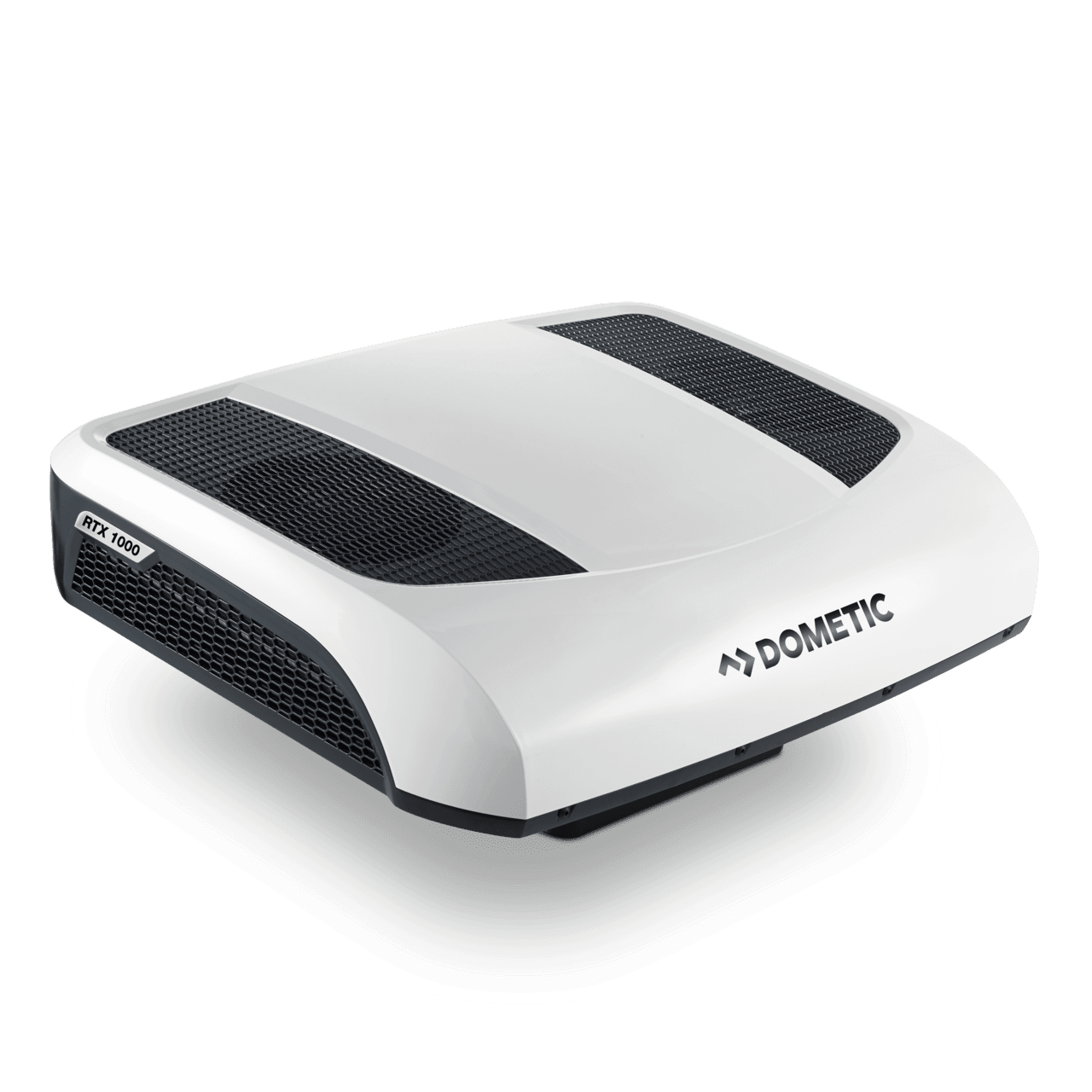
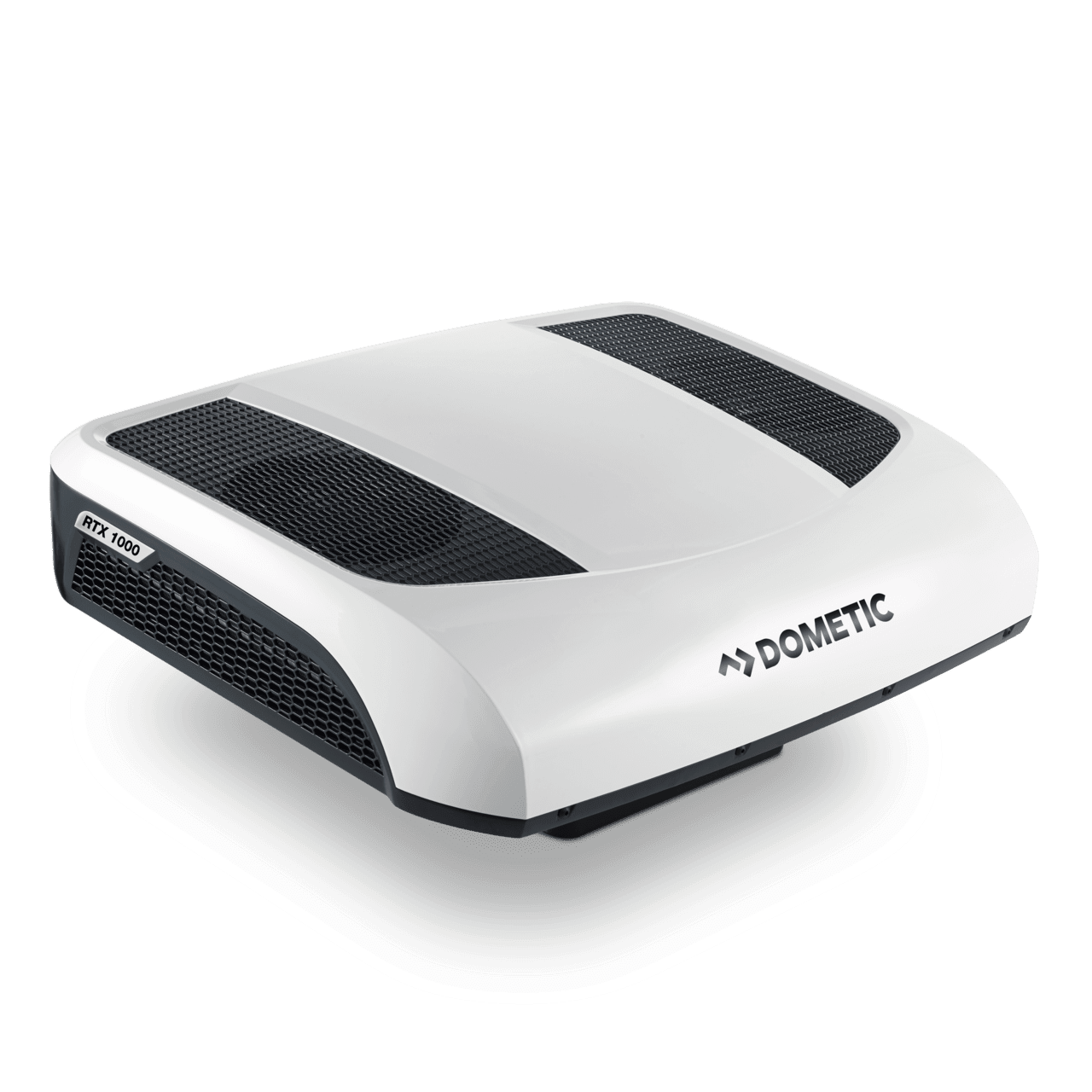
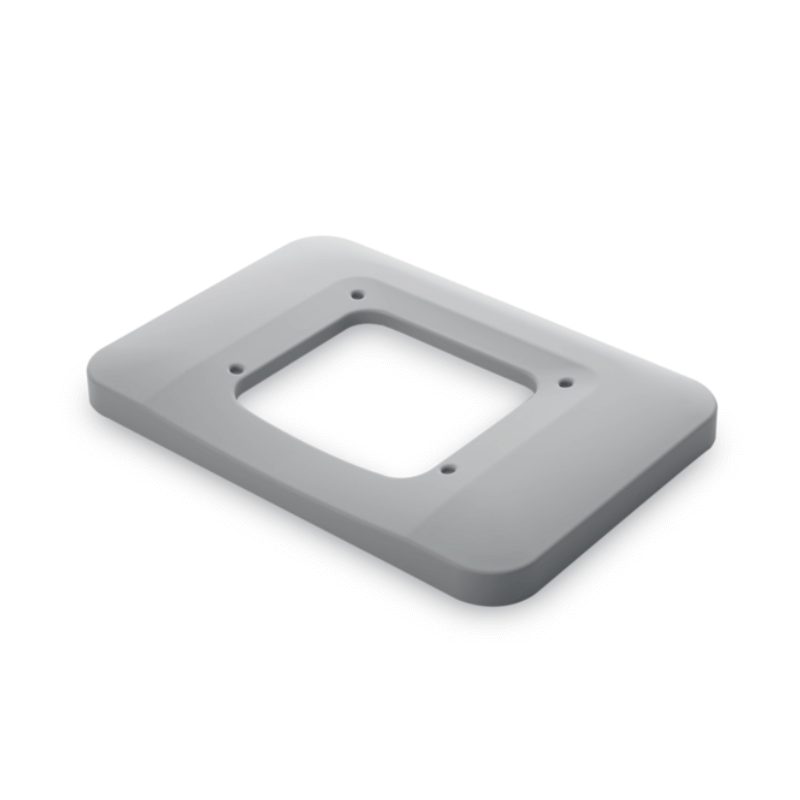
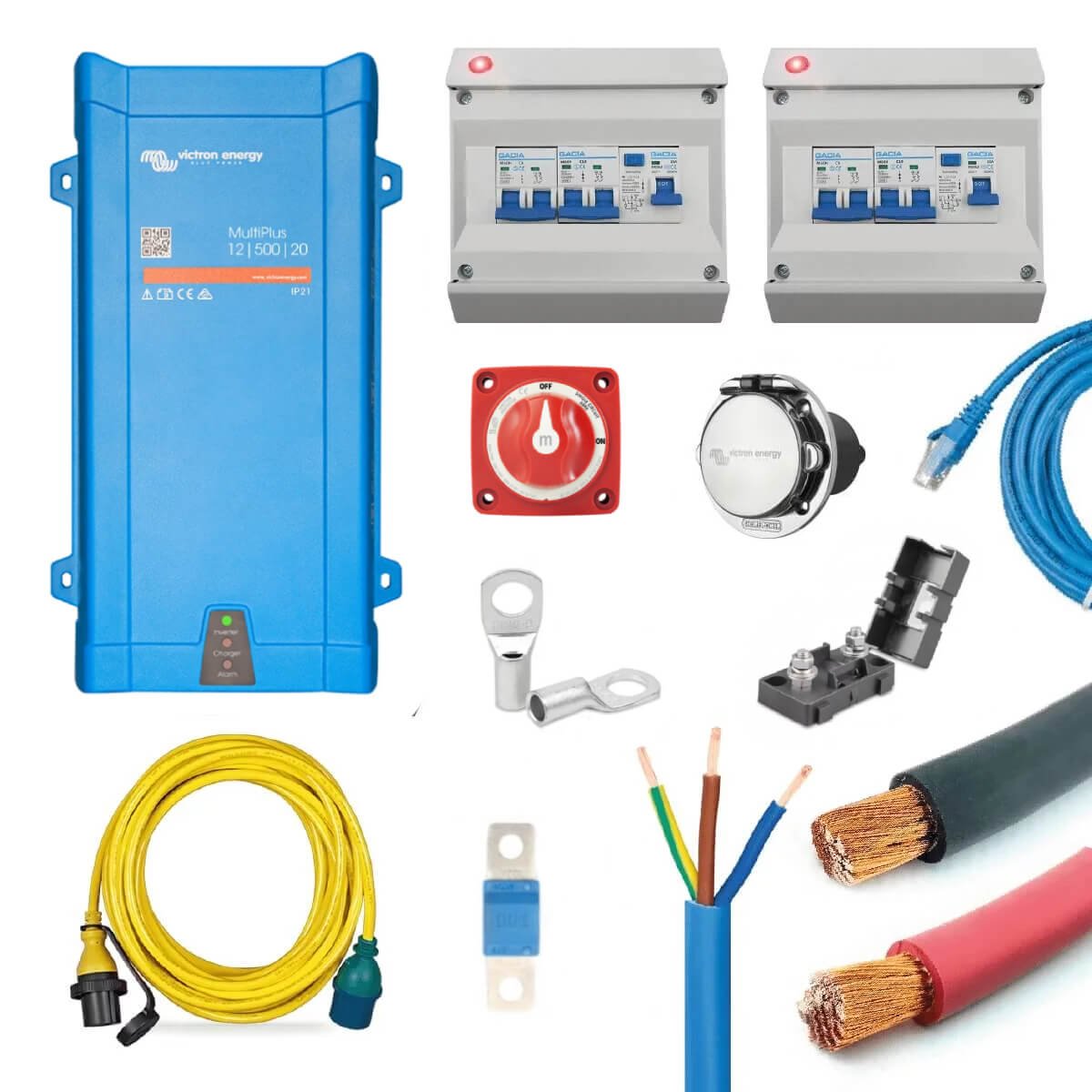
 Wiring diagram included
Wiring diagram included
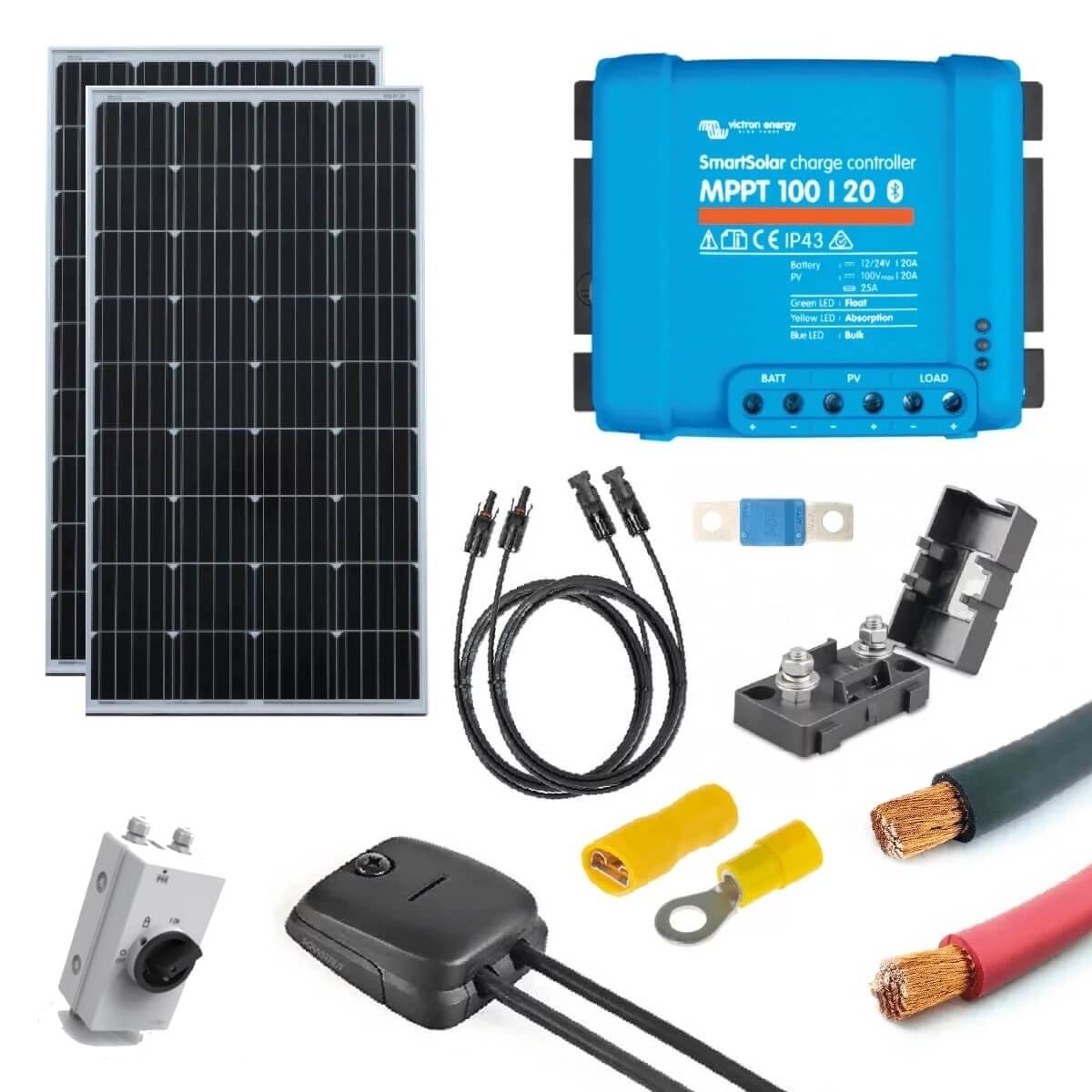
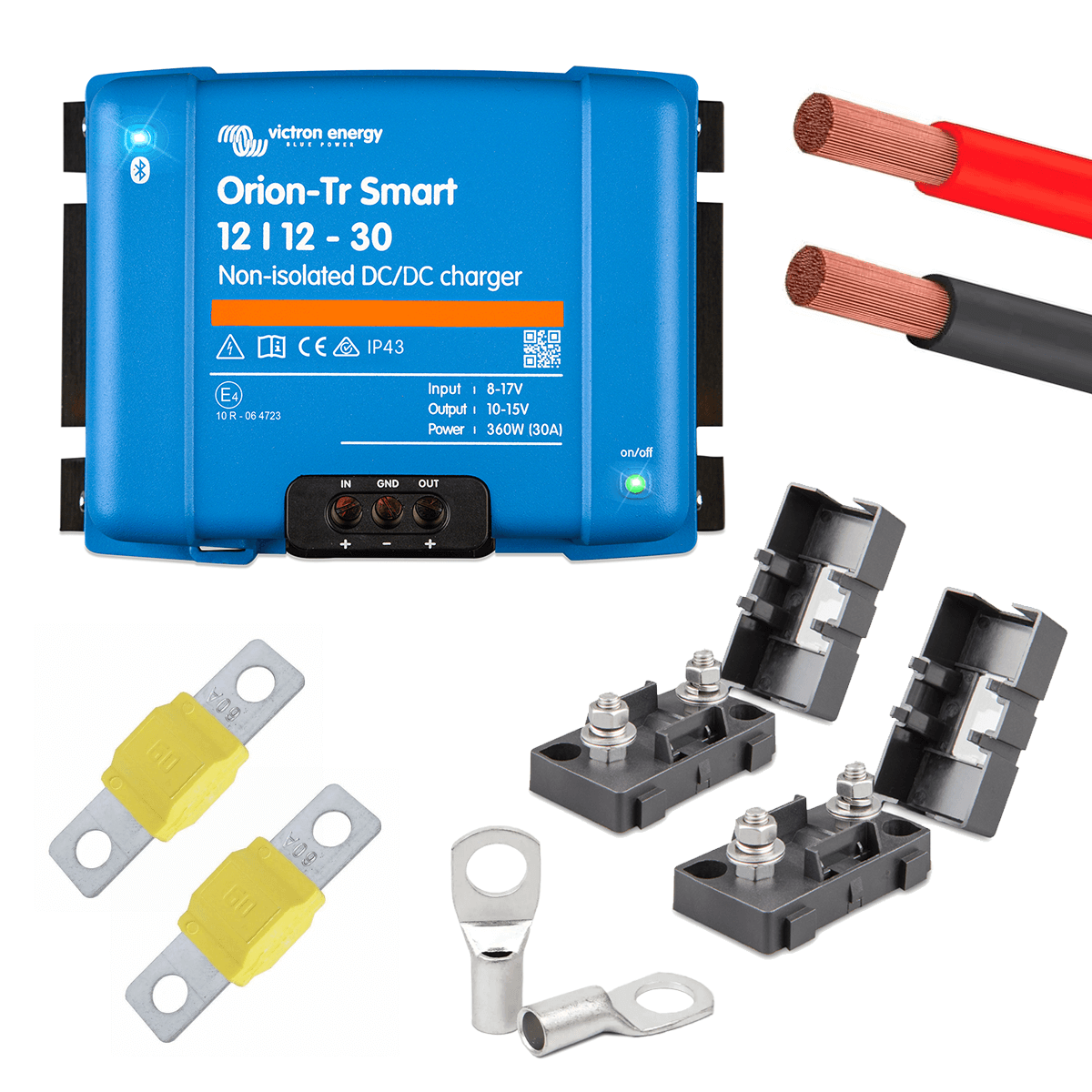
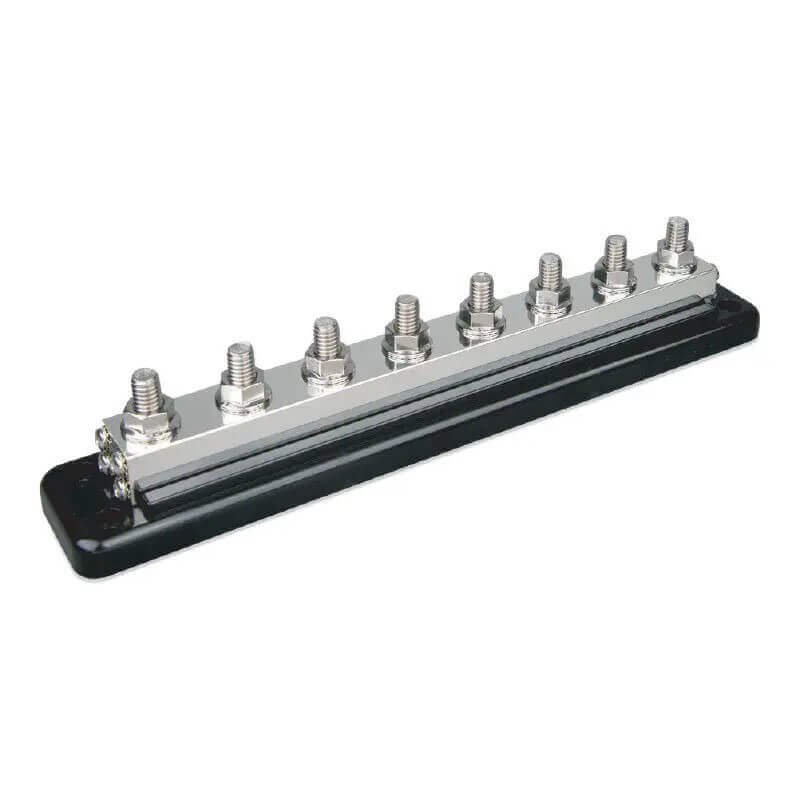
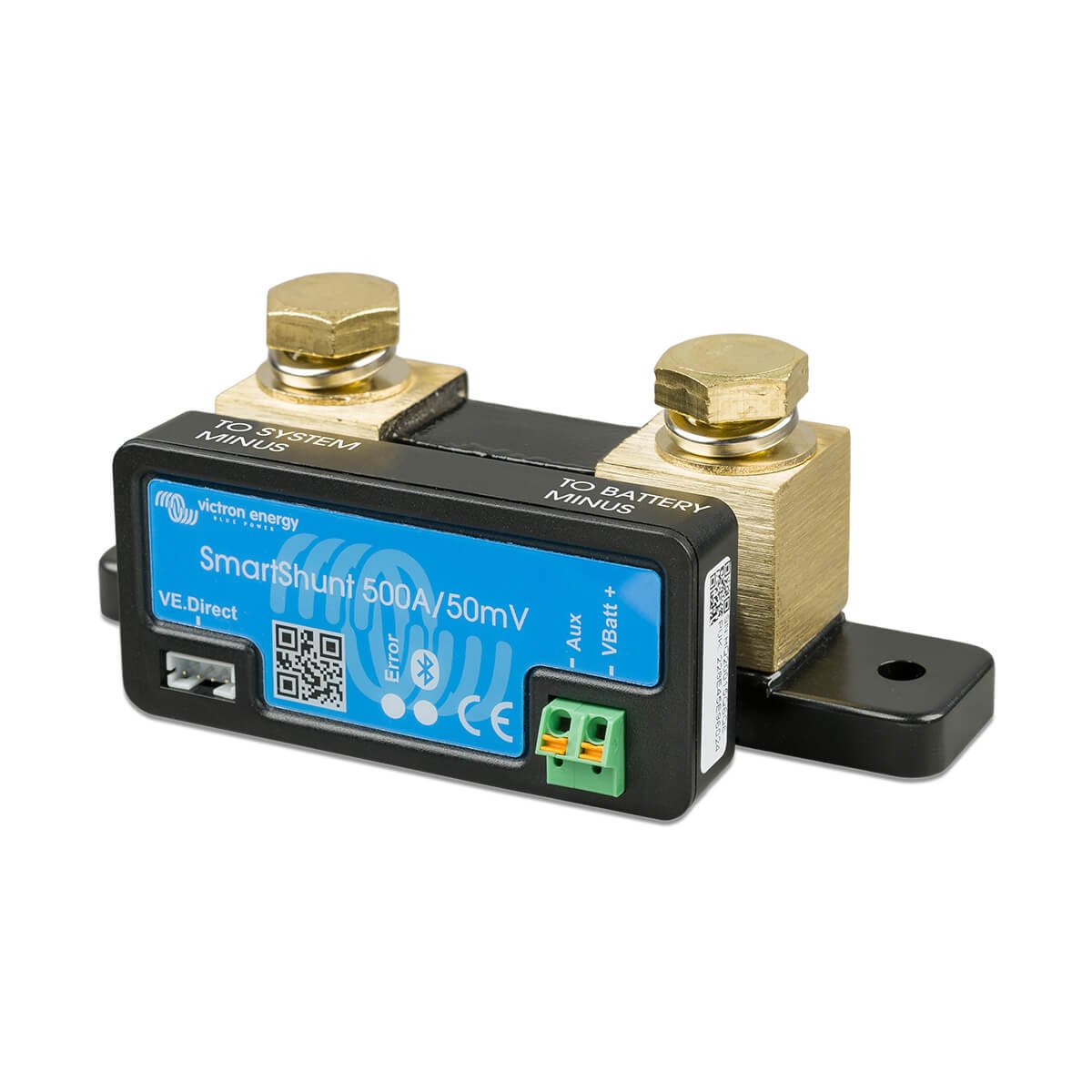
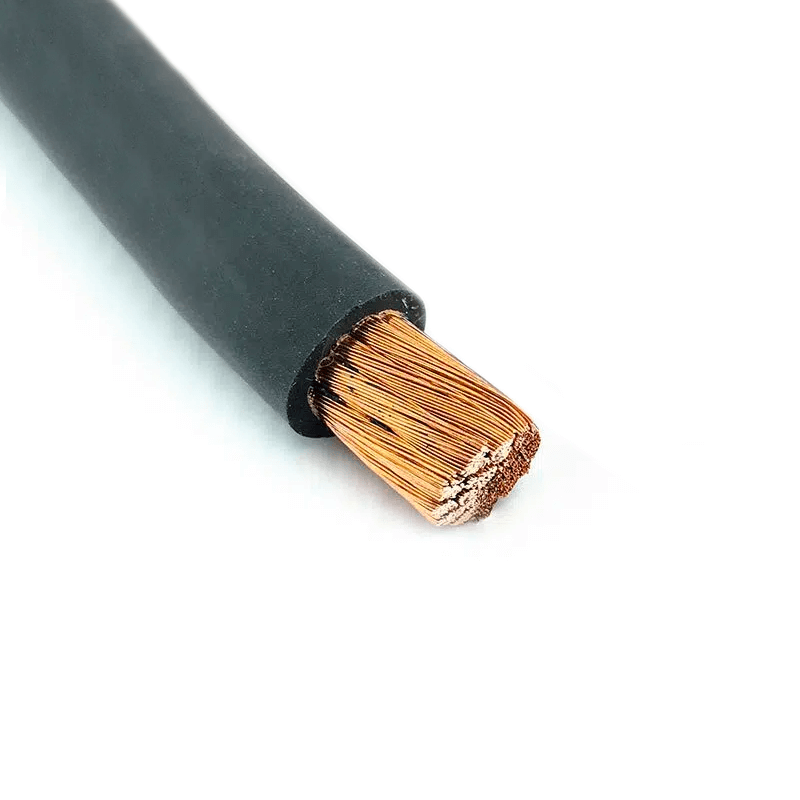
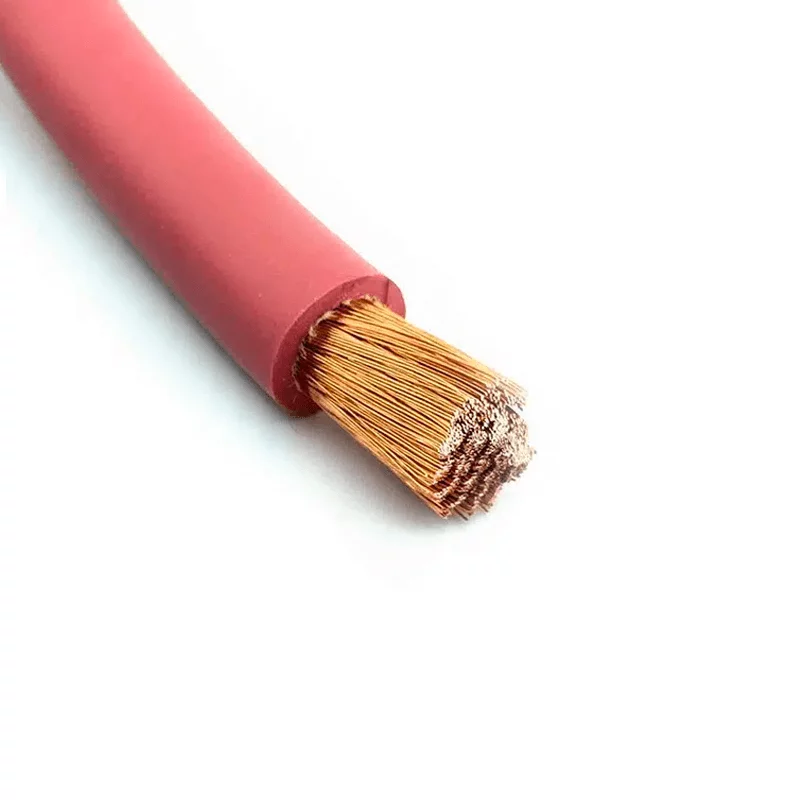
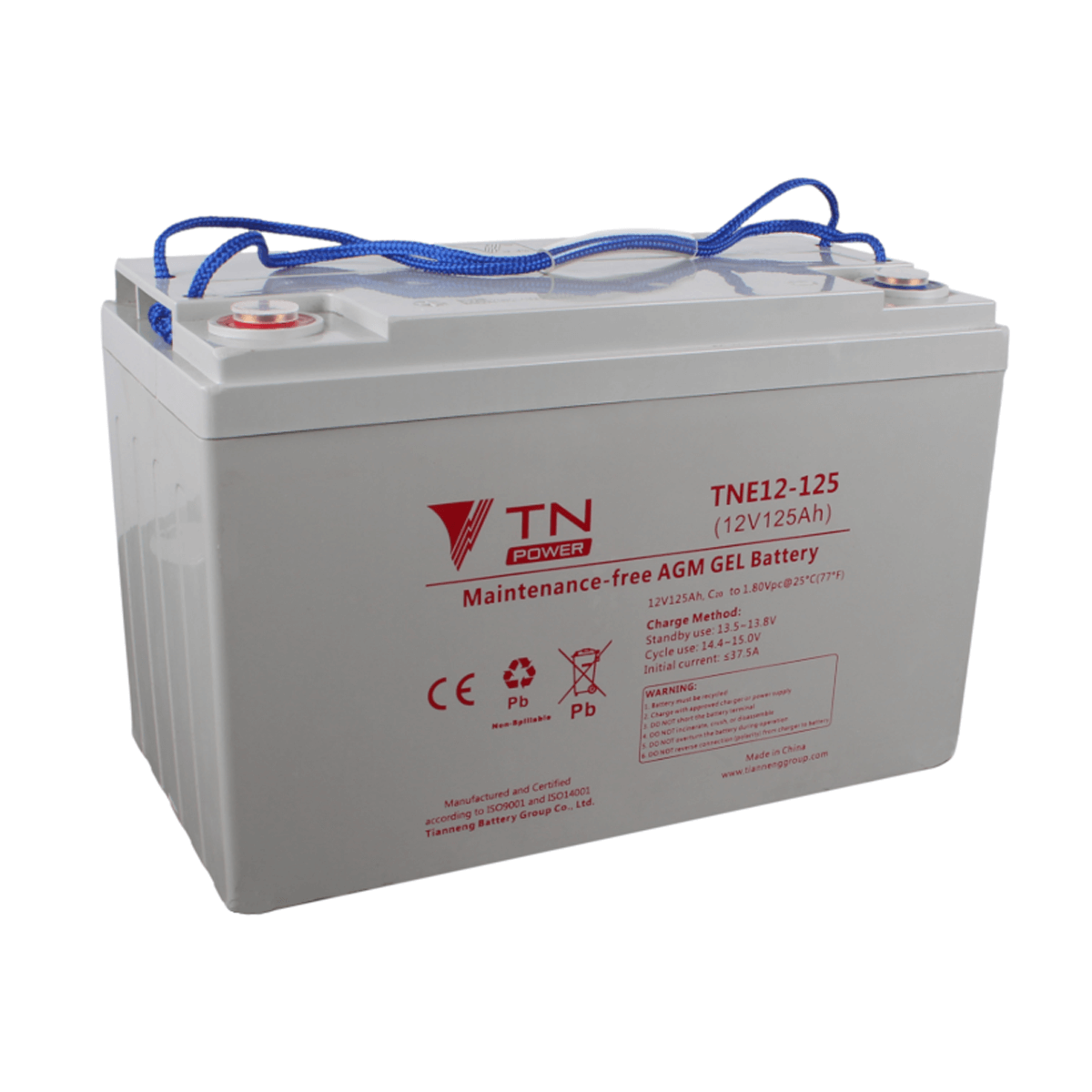
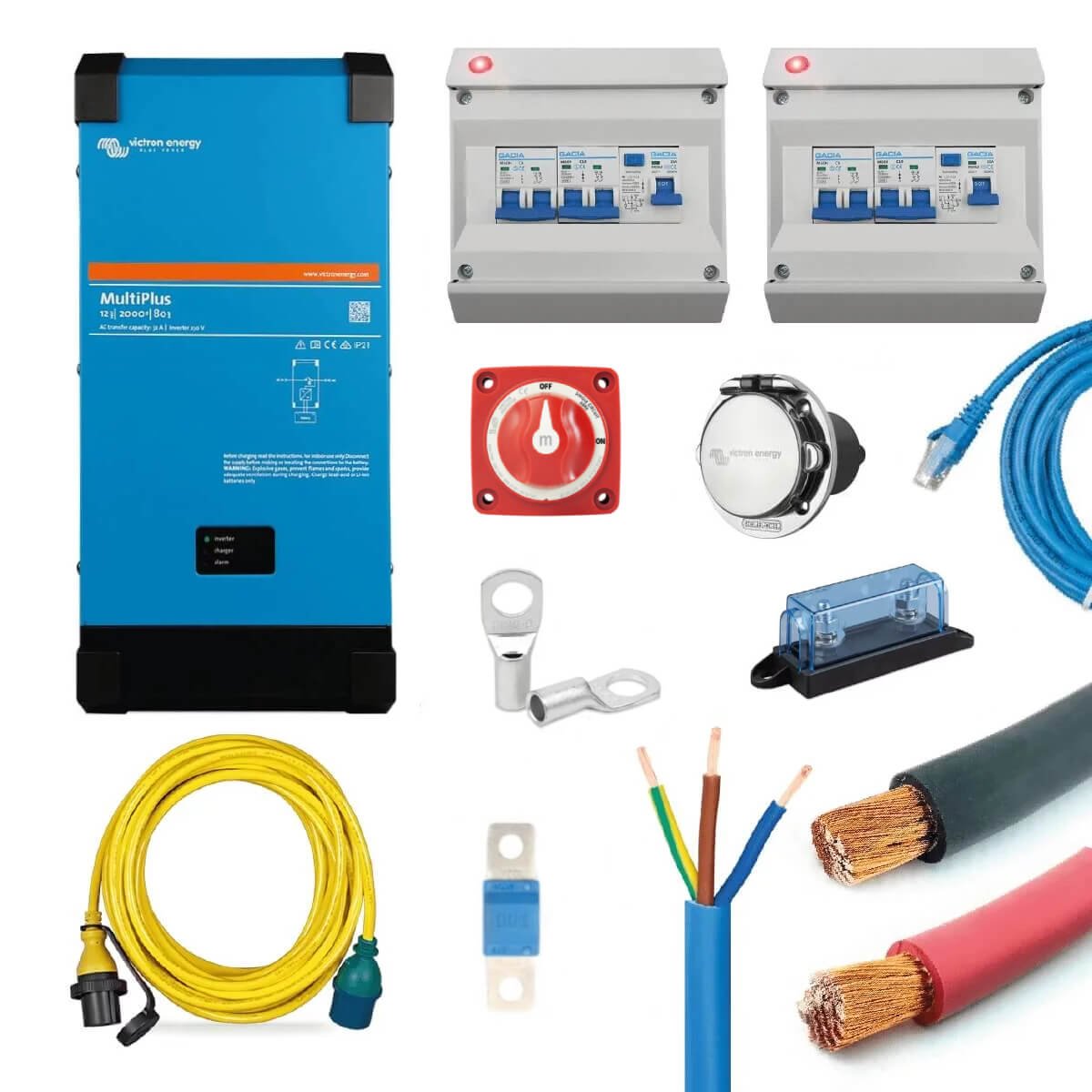
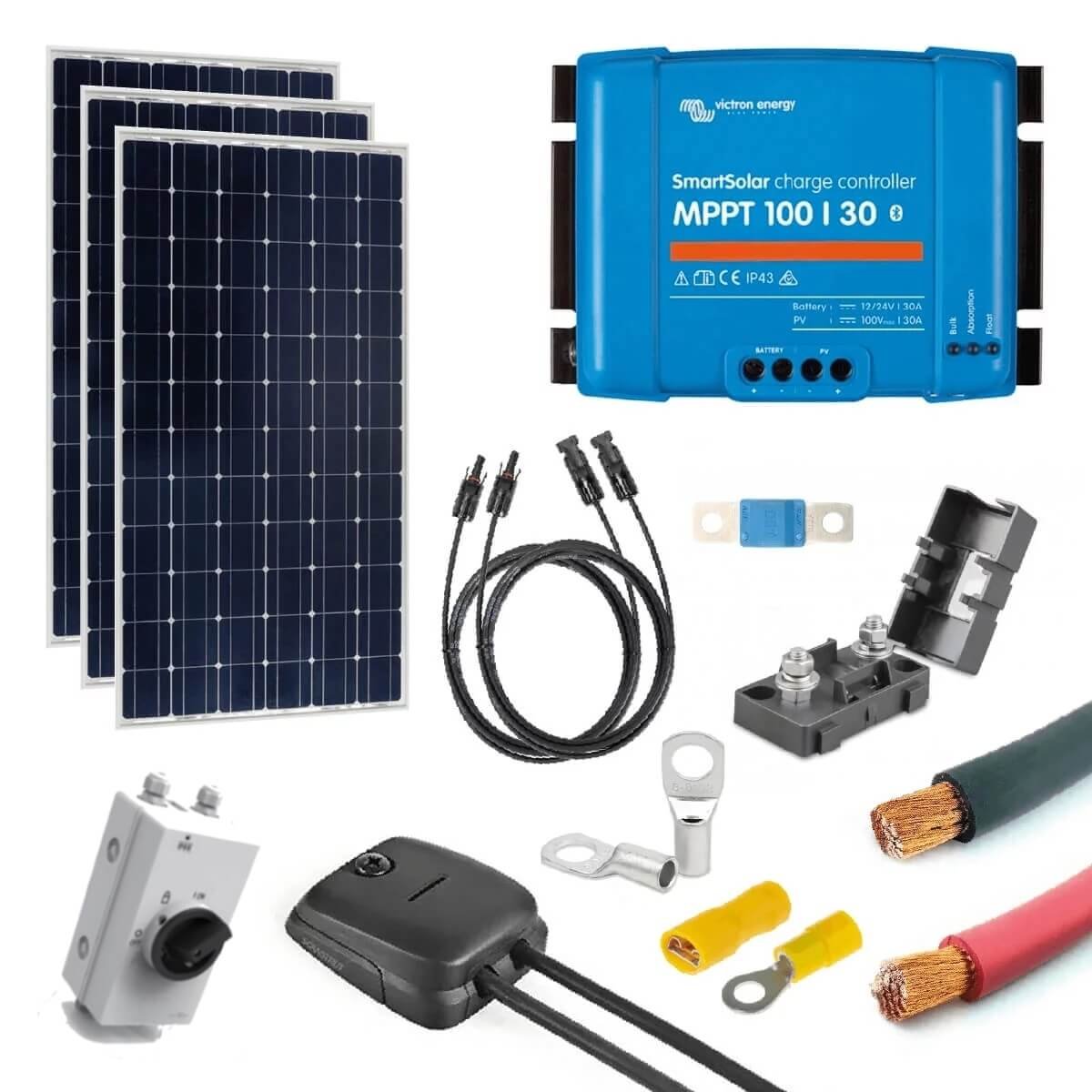
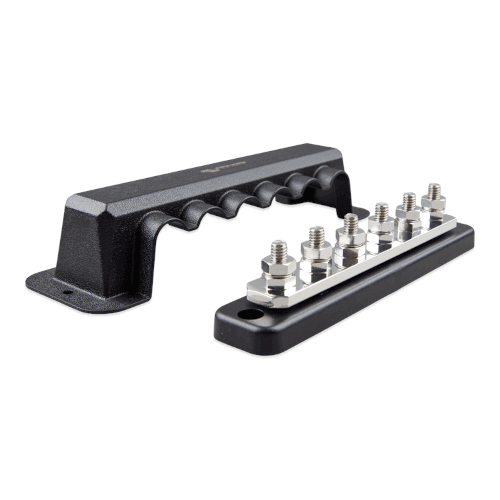
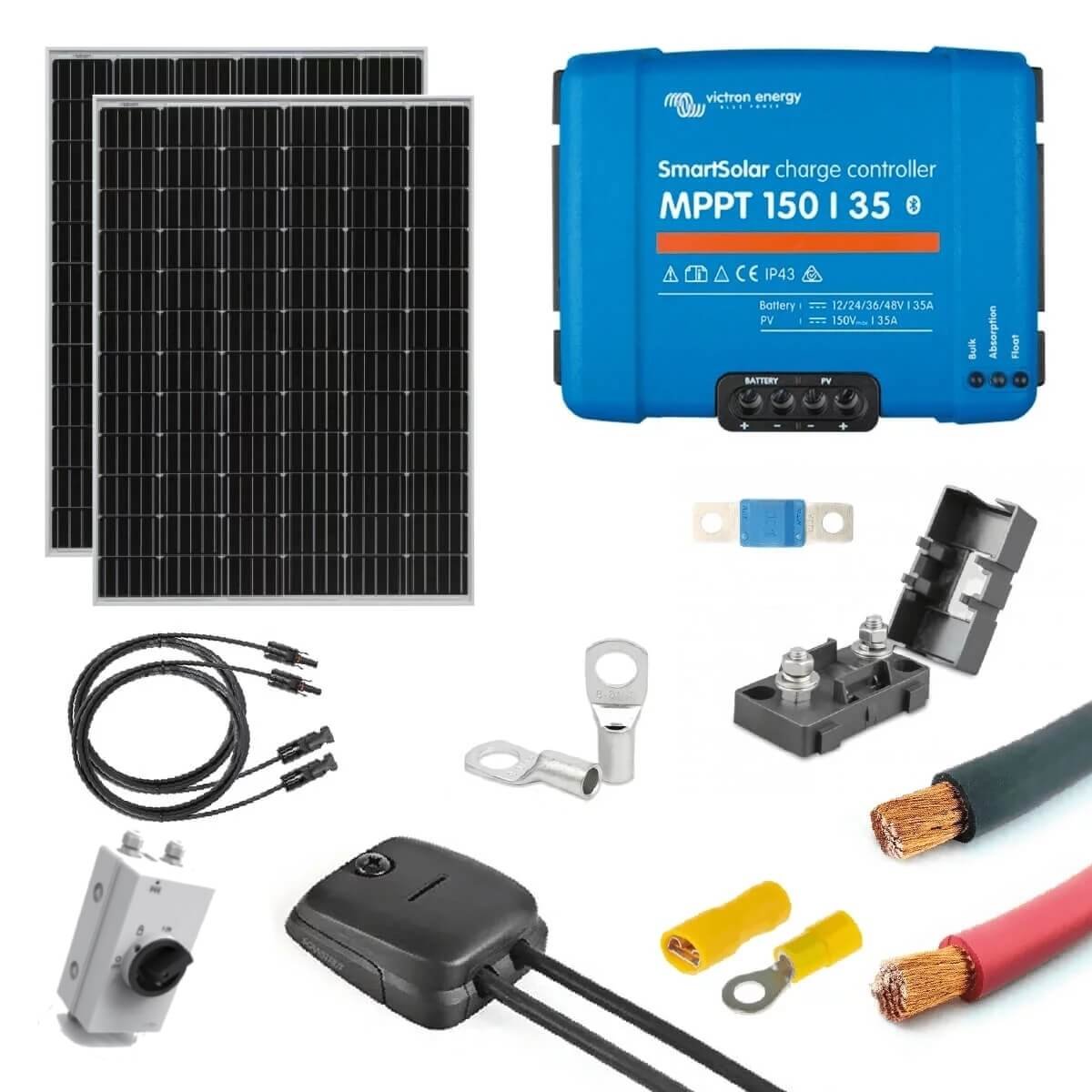
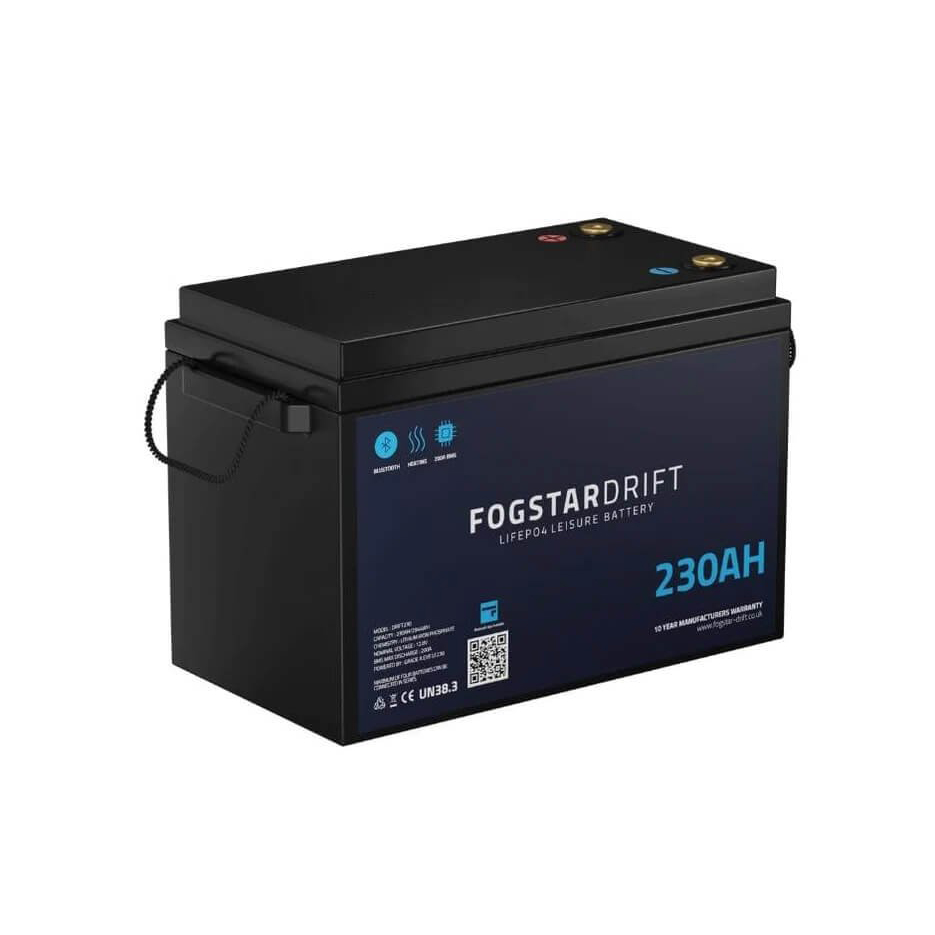
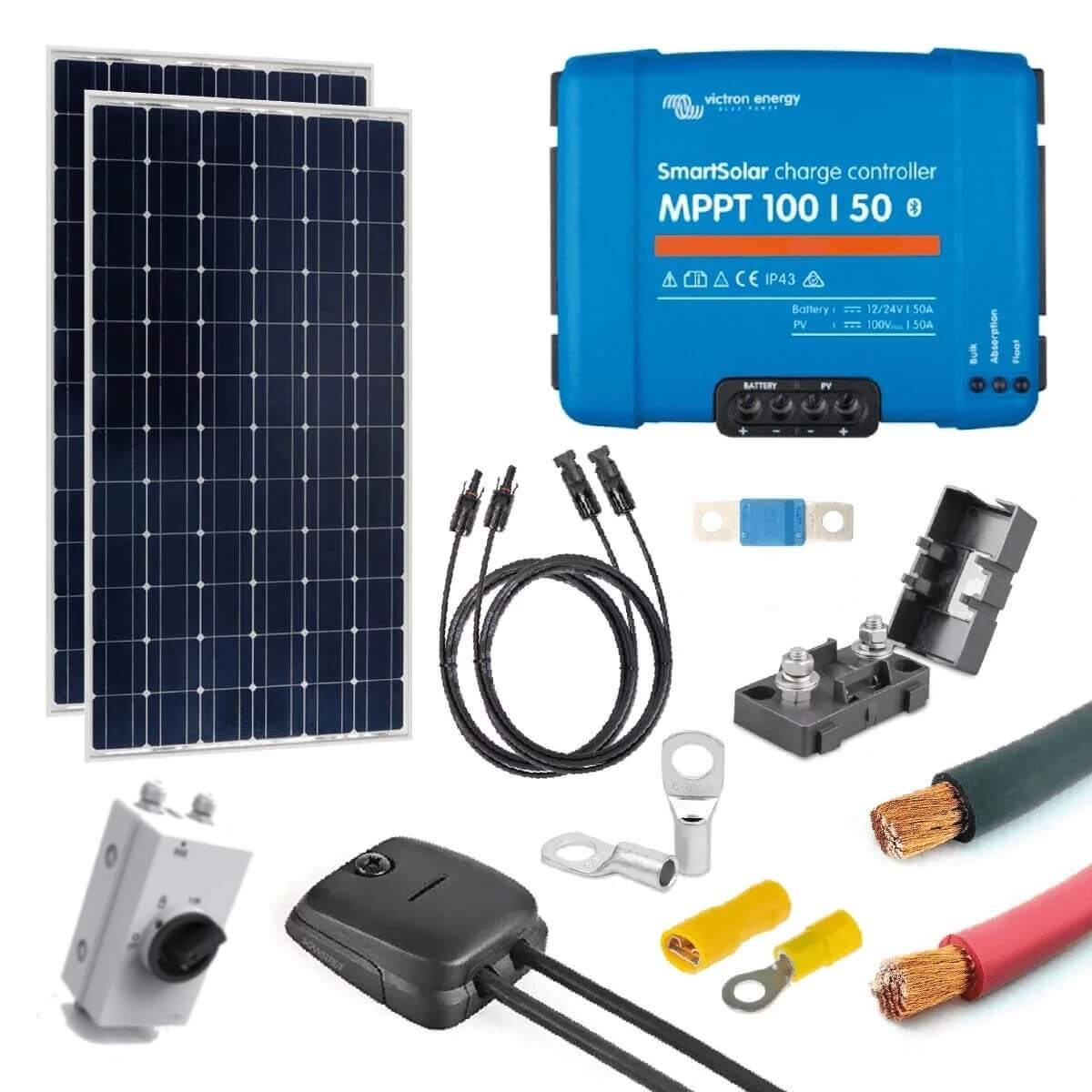
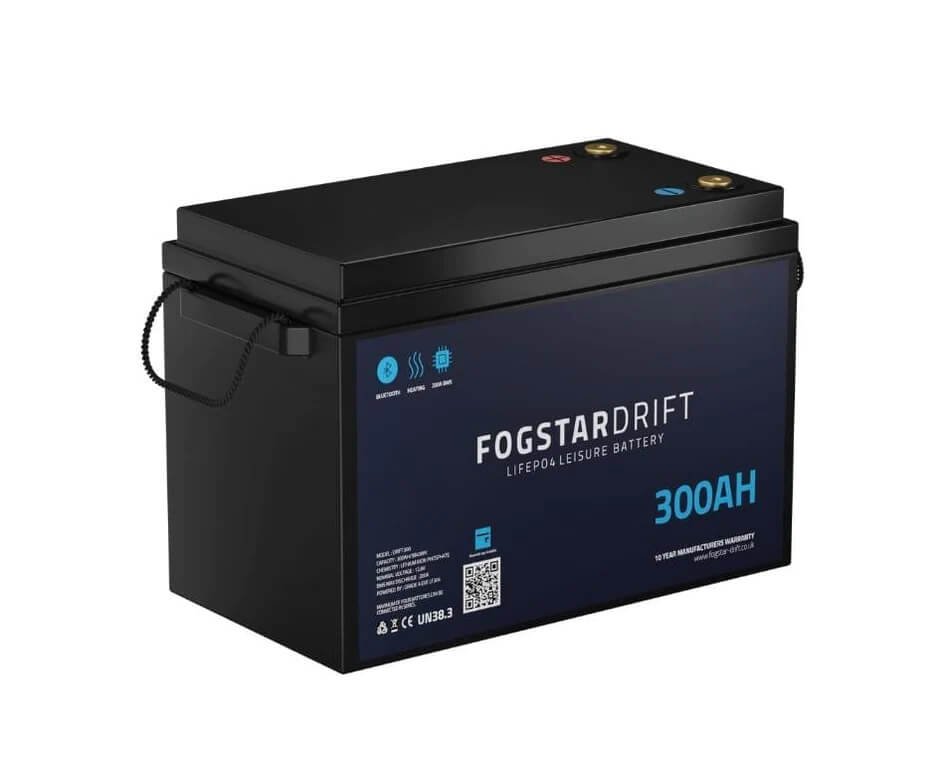
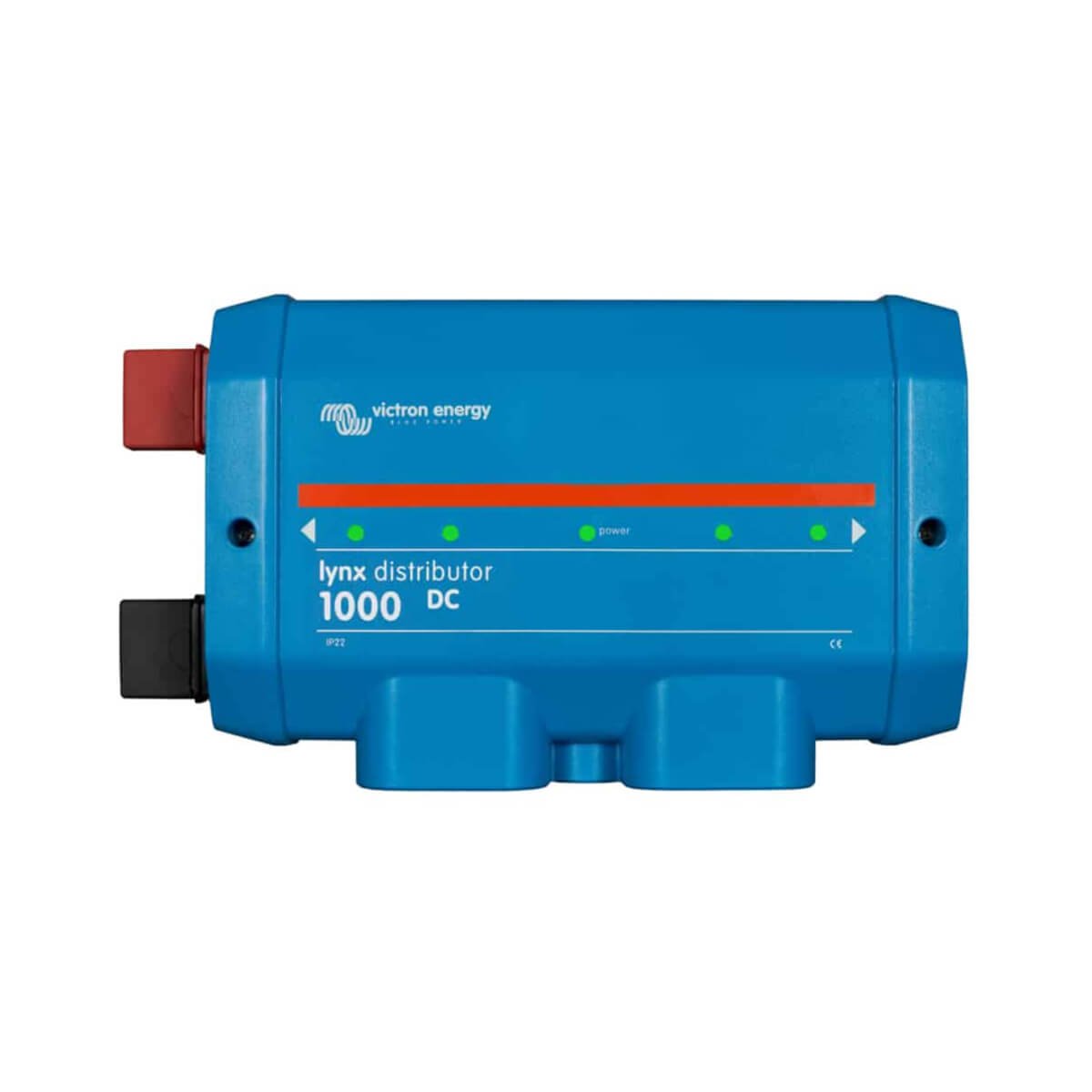
Do you have any certificate for van air-conditioners? For example emc report, CB report, etc.
Hi Yasemin, the Dometic RTX 2000 that is available to purchase on our website has CE, CB and ECE R10 certificates 😊